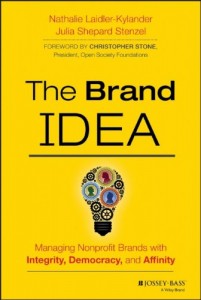Yesterday, Scott Weathers had a great piece calling out the short-sighted, faux-outrage of Ian Birrell, a British journalist whose main focus seems to be taking pot-shots at DFID and the UK’s investments in development assistance more broadly. To sum up, Birrell takes umbrage with the relatively high salary of Seth Berkley (more than $500k annually [update! turns out the salary is only approx £220k!]), the CEO of GAVI, the vaccine alliance which works to make childhood immunizations available to populations around the world. Birrell writes:
The astonishing pay arrangement is the latest outrage, exposed by The Mail on Sunday, of charity chiefs pocketing massive salaries and bonuses while taking British aid to fight world poverty.
Gavi is one of six new groups paying exorbitant amounts to senior executives. Two weeks ago, we revealed how seven major charities were doling out salary packages of up to £618,000 a year.
International Development Secretary Priti Patel demanded an end to ‘excessive profiteering’ when she was questioned over our revelations by the Commons’ International Development Select Committee two weeks ago.
But, as Weathers well points out:
Birrell’s criticism also reveals a common mistake when we talk about the “do-gooder” sector: misguided attention to inputs, rather than outputs. Instead of allowing organizations to determine how they can most effectively spend their money themselves and judging their performance based on results, critics like Birrell would rather focus on the narrowest examples of what they consider waste and fraud. This spending ― rarely put into financial proportion or given proper context ― often amounts to a small fraction of what we spend improving the lives of the poor. However, these examples are then often generalized to an entire sector in order to justify slashing donor funds that support life-saving aid.
While Birrell is playing an ideologically motivated, anti-aid game, it’s also true that relatively high pay for executives is the norm, especially for large development contractors. And, there are often large pay gaps within the pay structures for staff in capital cities / NGO headquarters versus site-based, country national staff. Weathers cites a blog post, but there is a lot of literature showing that CEO pay has very little to do with past performance and has small effects on motivating future performance: it’s mostly a function of the bargaining position of a given executive in relationship to their board of directors. NGOs, like for-profit corporations, are caught up in the same types of isomorphic pressures that cause them to look more and more like one another, often both in structure and in function, as norms, policies, and best practices diffuse through the field (Powell & DiMaggio, 1991).
So, while I agree with Weathers that CEO pay cannot be a wedge used to diminish support for vital development assistance programs, I worry about the political effects of NGOs succumbing to the market-based forces of the broader institutional field in which they are embedded. Throwing up our hands and saying that its just the “market at work” for exceptional talent at the very top seems not only an insufficient answer, but also tone-deaf politically. As Kristof Decoster quipped on twitter, relatively high CEO pay is an all too easily cherry-picked argument for aid critics:
Still – this was an accident waiting to happen in our "new" times #globalhealthvulnerability #inperceptionveryclosetoelites https://t.co/ZYDX4stZiY
— Kristof Decoster (@KristofDecoste1) January 3, 2017
For me, all of these issues are deeply political and not simply a matter of costs and benefits. We can make all of the “rational” arguments we want by demonstrating quantitatively the cost-effectiveness of relatively small investments in CEO pay compared to the enormous benefits of lives saved. But, I worry that this line of reasoning serves to depoliticize the whole issue of delivering effective health services to the poor. We need leaders and their organizations to embody an active resistance to market forces rather than reproduce inequalities that are at the root of health injustices in the first place.
Powell, W. W., & DiMaggio, P. (1991). The New institutionalism in organizational analysis. Chicago: University of Chicago Press.
